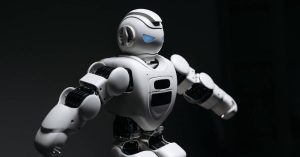Using solar panels to produce electricity on the moon has been studied for some time. However, the technology is still in its early stages, and there is a lot that still needs to be done before we can put solar panels on the moon for the purpose of producing energy. Some of the most important steps in this process are learning how to calculate how much energy the moon can produce and how to transmit this energy to Earth using microwave laser beams.
Solar Panel Calculating the amount of energy in moonlight
Using a solar panel to collect moonlight is a bit like trying to drink the Kool-Aid. Solar panels are capable of producing 300 watts of power during the day, but during the night, their output drops by a factor of ten. However, if the solar panels are tilted, they can collect more energy. And if the panels are placed on the ground, the chances of picking up a scattered photon are greater.
- Isn’t a good reflector of solar radiation
The moon has an estimated surface area of 38 million square kilometers. It’s a relatively large rock, but it isn’t a good reflector of solar radiation. In fact, 12% of the energy hitting Earth is reflected. However, this isn’t all that surprising since the moon is a cylinder of roughly 1,368 watts per square meter, and that’s a lot of energy to capture.
If you are wondering how much energy the moon can provide for you, it’s impossible to say for sure, but the sun sends an impressive amount of energy to Earth during the day. If you are lucky enough to live near the Moon, you might be able to capture enough of the energy to power your home.
To transmit this energy to Earth, microwave laser beams are used
Using microwave laser beams to transmit this energy to Earth is the most promising of all the potential technologies for wireless power transmission. This could one day provide a clean energy source for our planet. However, there are some problems and disadvantages to this type of technology.
- Affect the cost of beaming power
One of the problems is the cost of beaming a laser beam. There are many factors that affect the cost of beaming power. For example, the cost of a laser system is four times more expensive than a microwave system. Another issue is the cost of the beam director. If the cost of the beam director falls below twenty dollars, the technology becomes economically viable.
Microwave beaming systems, on the other hand, are more efficient and safer for plants. They also avoid moving parts in space. In addition, they are safe for humans and animals.
- Advantages of laser systems
That they can transmit power through the atmosphere and through clouds. Additionally, the wavelengths of lasers are four times shorter than the wavelengths of microwaves. This allows for smaller satellites and smaller satellite power. This also reduces the cost of satellite dispatch.
In addition, a laser system produces between one and ten MW of energy per satellite. This is twice the amount of energy that is produced by a typical microwave oven. This also allows for a n hiarrower focus of the laser beam.
Another advantage of a laser system is the ability to be deployed in the constellations of hundreds of satellites. This would make it possible to transmit the energy to Earth through a ring of power relay satellites. This would not only power-human civilization, but it would also allow for space-based solar power.
- Transmit t converts the laser energy into microwave radiation
Laser beams can be aimed using telescopes or mirrors. Slotted waveguides can also be used to form a beam. It is also possible to transmit the power from a laser to a base station that converts the laser energy into microwave radiation. This is a hybrid approach that would allow for greater efficiency than solar cells.
Self-replicating solar panels in space
- Several researchers have shown how recent technological advancements could make the concept of capturing solar power in space a reality. This includes solar panels that can be launched from the moon to power our homes and businesses. Other agencies have also studied the idea, including NASA. These panels would be a lot cheaper than their counterparts on Earth, which can cost tens of trillions of dollars to develop.
- The biggest obstacle to launching these panels into orbit is the cost of the rockets to launch them. Researchers in Japan have already successfully demonstrated a wireless power transmission system. These systems are designed to provide clean, reliable energy to remote communities. They can beam power up to 10 kilowatts to a receiver located 1,640 meters away.
Future uses for solar energy on the moon
Various research groups are looking at ways to harness solar energy on the moon. For example, a team of scientists at the Tallinn University of Technology has been working on in-situ resource utilization. They hope that their findings will lead to the production of solar cells from regolith. This would help reduce the cost of hardware resupply from Earth.
The Moon’s south pole is an ideal place to harness solar energy. It receives approximately 80 percent of the sunlight that the Earth receives. This means that half of the Luna Ring would always have access to sunlight.
- System for concentrating photovoltaics
For long-term lunar bases, concentrated photovoltaic systems would be used. Involves using self-replicating solar panels. These would collect solar energy, and would then beam it to the ground. They would also enter the Earth’s orbit, and would be able to build copies of themselves on the Moon. This would allow the energy to be sent to the ground without the use of warp drives. This could be an affordable solution for solar energy on the moon.
- Strategy for harnessing solar energy on the moon
Professor Jeffrey Gordon of Ben-G ni iurion University has developed a feasible strategy for harnessing solar energy on the Moon. He has been invited to present his plan to NASA. He believes his solution is affordable and could cost as little as $10 billion. He has published a paper in New Space discussing his plan. He believes that a lunar civilization of 20-22 TW could be built by the mid-century.
This plan would allow scientists to study how solar energy works on the Moon, as well as how the lunar environment affects solar cells. He has taken into account the Moon’s near-zero tilt and its smaller diameter compared to Earth. He has also considered the Moon’s lack of atmosphere.
Conclusion
Regardless of what type of solar panel you use, there are a few things to remember. First of all, make sure you clean the panel regularly. Dirt on the top of the solar panel blocks sunlight from reaching the cells. This decreases the overall efficiency of light reflection, which means free energy will be lost.






